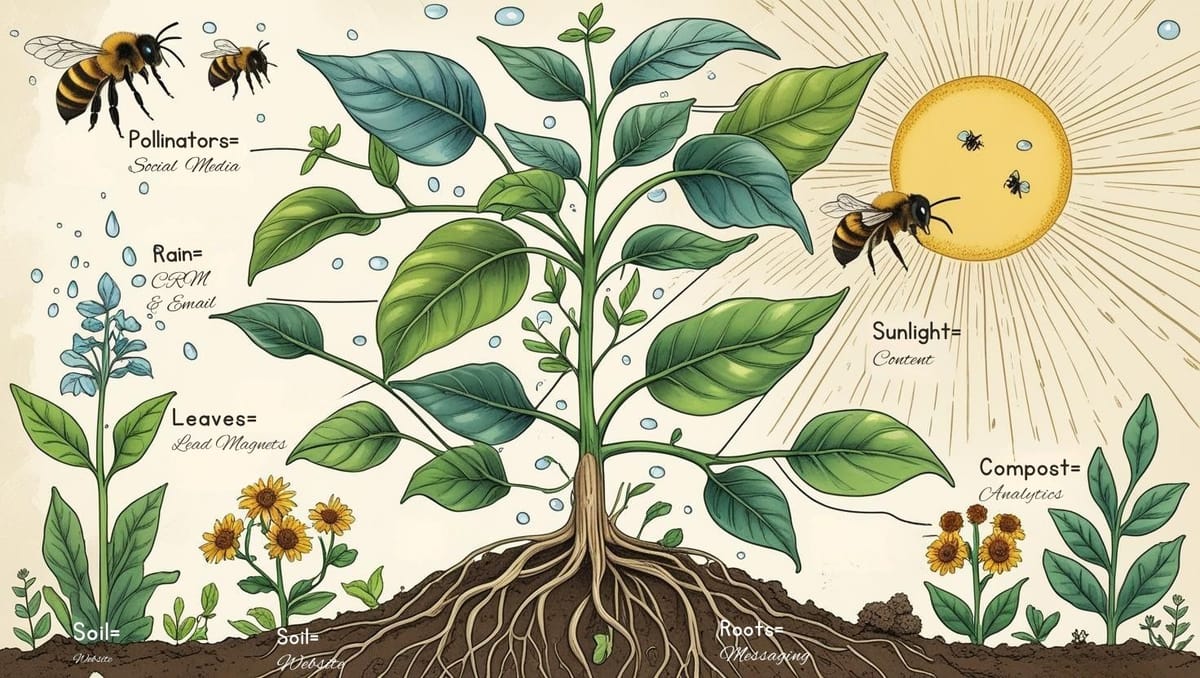
By Susie Taylor | WBN News Contributor | 28 June 2025
When people think about marketing, they often imagine separate tasks stacked on a to-do list: write emails, post to Instagram, update the website, maybe run an ad.
But what if you stopped thinking of marketing as a checklist, and started seeing it as an ecosystem?
Enter Alexander von Humboldt, 19th-century explorer, naturalist, and arguably one of the world’s first true environmentalists. Long before climate change was a trending topic, Humboldt warned that deforestation could alter weather patterns and that disrupting one part of nature could unsettle the whole.
He saw the planet as a web of interconnected systems, where plants, animals, climate, terrain, and human activity all influenced one another. He mapped mountains, studied clouds, classified plants, but most importantly, he looked for the relationships between them.
And if that isn’t a perfect metaphor for marketing, I don’t know what is.
The Humboldt View of Marketing
Humboldt wouldn’t approve of marketing silos. He’d tell us to zoom out, to ask:
- What’s feeding what?
- What’s draining energy from the system?
- Where are the nutrients (or leads) really coming from?
Let’s imagine your marketing is a living ecosystem.
Your Website Is the Soil
It nourishes everything else. It holds the information, the tone, the message. If your website isn’t healthy, nothing can grow. That includes your sales.
Your Message Is the Root System
Strong roots keep your brand anchored and help everything else grow in alignment. This is your brand voice, your positioning, your story. It's mostly invisible but absolutely vital.
Content Is the Sunlight
Regular blogs, emails, videos, and social media posts are what your audience uses to photosynthesize your value. Without light, even great ideas wilt.
Social Media Is the Pollinator
Just like bees carry pollen from plant to plant, your social media carries ideas, posts, testimonials, and your energy into new places where others can find and share you.
Your CRM and Email List Are the Rain
Drip by drip, they nurture growth. Timely follow-ups, nurture sequences, and personal emails keep your leads from drying out.
Analytics Are the Compost
They might seem messy, but they help you understand what’s breaking down, what’s feeding growth, and what needs to be reworked for better results next time.
The Lesson from Humboldt: Don’t Isolate. Integrate.
Humboldt’s genius was not in discovering new pieces, but in seeing how the pieces fit together.
Likewise, your marketing doesn’t live in a vacuum. A broken website can sabotage a good social campaign. A clear message can multiply the impact of every other channel. A neglected email list can dry up sales. A thriving nurture sequence can keep leads blooming for months.
If you're frustrated because your marketing "isn’t working," the solution may not be doing more. It may be zooming out and seeing what’s out of balance.
You Don’t Need More Tactics. You Need a Healthy System.
It’s easy to get caught up in shiny new marketing tools. But ecosystems don’t thrive because of trendy apps or clever hacks. They thrive because the fundamentals are working together.
Ask yourself:
- Is your message clear and consistent across all platforms?
- Do all your touchpoints guide people toward the same goal?
- Are you nurturing your leads, or just collecting them?
- Is your marketing working like an ecosystem, or a bunch of scattered parts?
If your answer leans toward “scattered,” don’t worry. Humboldt didn’t map the world in a day. He started by observing.
You can do the same.
Ready to map your marketing ecosystem?
Let’s take a fresh look at how your message, content, and strategy are (or aren’t) working together. Schedule a FREE 30-minute Marketing Ecosystem Review and start building a system that grows.
Contact: Susie Taylor - susie.taylor.writer@outlook.com
#Marketing Strategy #Small Business Tips #Storybrand #Marketing Ecosystem #Alexander Von Humboldt #Holistic Marketing #Interconnected Marketing #Content Strategy #Brand Messaging #Digital Marketing Tips

